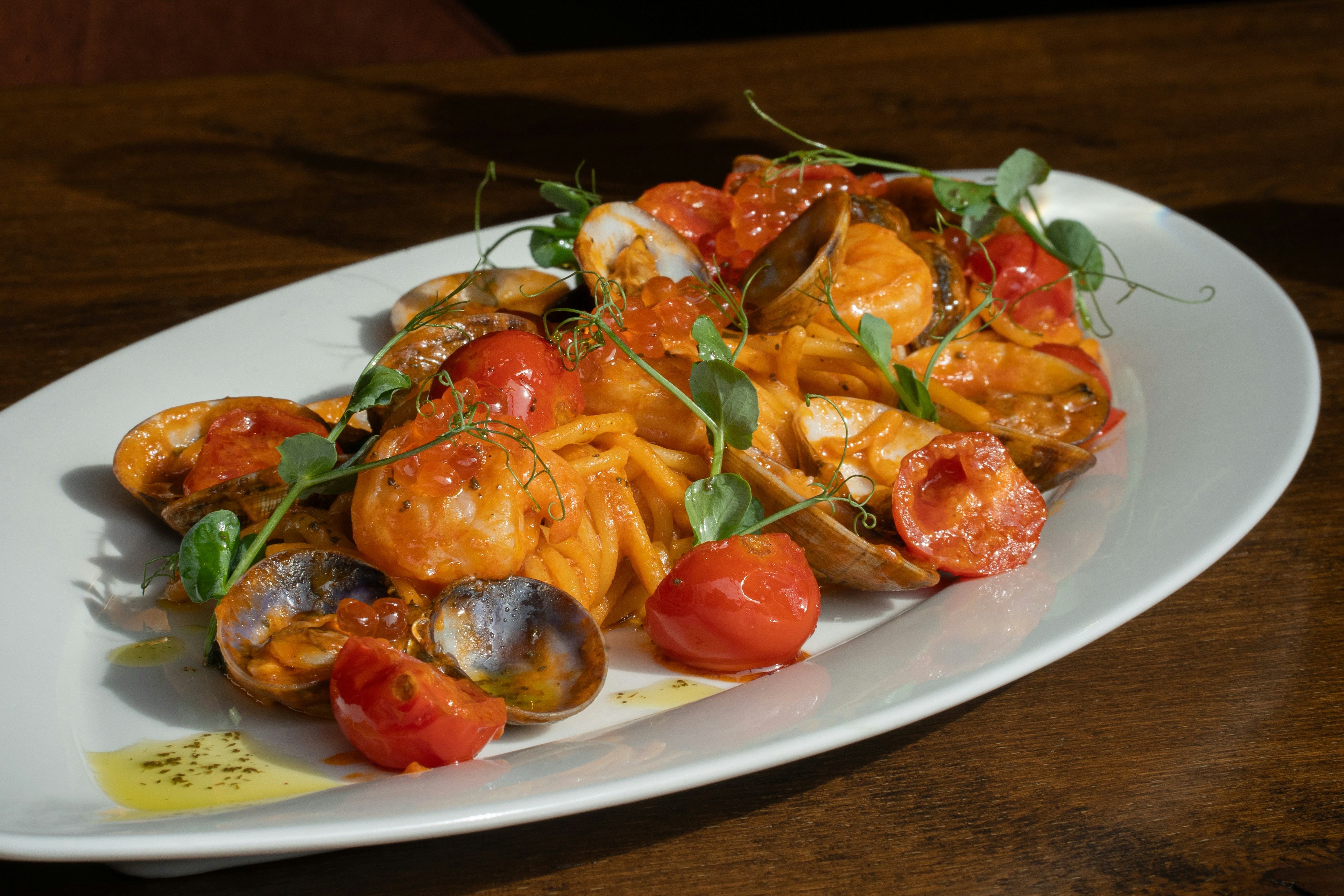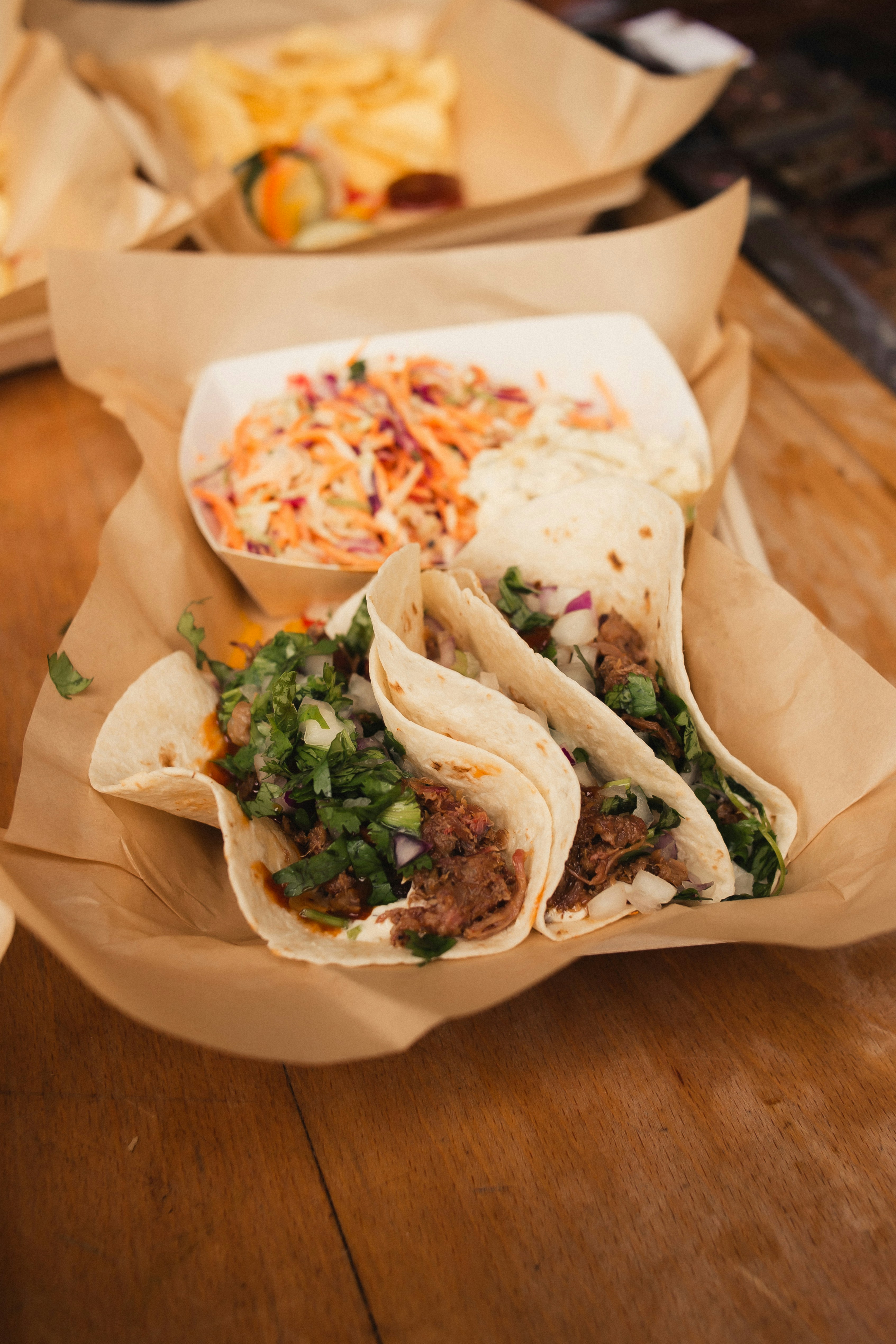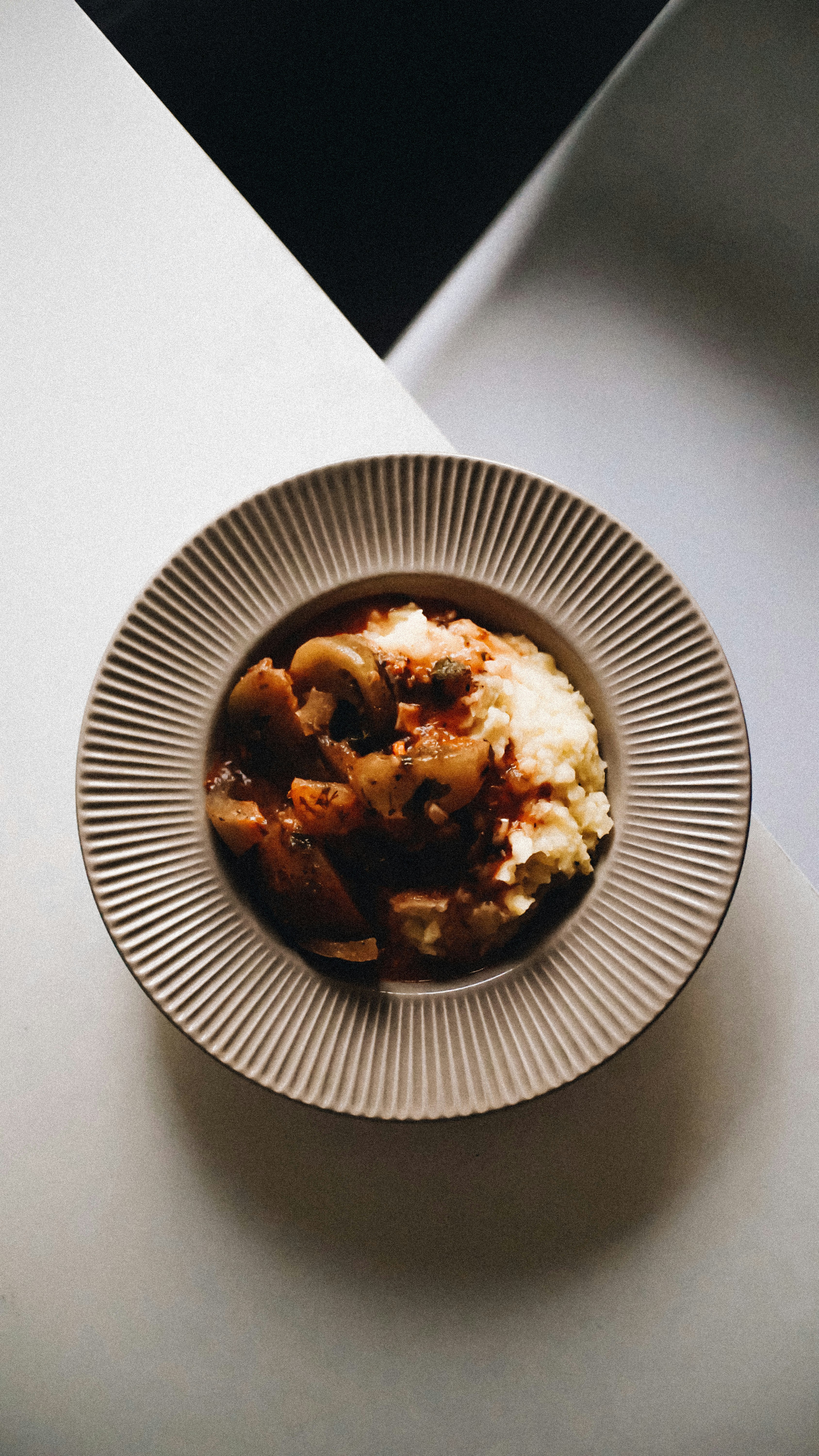
Introduction to Easy Seafood Recipes
Cooking with seafood can often seem daunting, especially for beginners. However, easy seafood recipes are accessible to anyone willing to explore the ocean’s culinary offerings. These dishes provide a multitude of benefits, including exceptional nutritional value, versatility in flavor profiles, and the potential for quick meal preparation. Seafood is an excellent source of protein, omega-3 fatty acids, and various vitamins and minerals, making it a wholesome addition to any diet.
One of the advantages of incorporating easy seafood recipes into your home cooking is their versatility. Seafood can be enjoyed in numerous forms, whether grilled, baked, sautéed, or steamed. This adaptability allows home cooks to experiment with various flavors and cooking methods while creating delightful meals. From shrimp and fish tacos to scallops and creamy pasta dishes, the possibilities are endless. These recipes can cater to a wide range of dietary preferences, making them suitable for both casual dinners and special occasions.
Moreover, preparing seafood can often be a quick process. Many easy seafood recipes call for minimal ingredients and are designed to be completed in under 30 minutes. This time efficiency is particularly valuable for busy individuals who still want to enjoy healthy home-cooked meals. With the right seafood recipes, it is entirely possible to have a nutritious and delicious dinner ready in no time.
This blog post aims to motivate readers by showcasing a variety of simple seafood recipes that are perfect for beginners. Whether you are looking to impress guests, provide a nutritious meal for your family, or simply try your hand at cooking seafood for the first time, this collection will guide you through the process, making it enjoyable and rewarding. Through easy preparation methods and readily available ingredients, anyone can become a seafood enthusiast in their own kitchen.
Benefits of Cooking with Seafood
Incorporating seafood into your diet offers numerous health benefits, making it an excellent choice for individuals looking to improve their overall wellness. One of the most notable advantages of seafood is its rich content of omega-3 fatty acids. These essential fats are crucial for maintaining heart health, as they can help reduce inflammation and lower the risk of chronic diseases, such as heart disease and stroke. Regular consumption of seafood can contribute to better cardiovascular function and a balanced lipid profile.
Seafood is also a high-quality source of protein, containing all the essential amino acids necessary for the body’s functions. This makes it a valuable addition to a balanced diet, especially for those seeking alternatives to meat. Lean seafood options, such as fish and shellfish, provide an excellent source of protein without excessive saturated fat, supporting muscle growth and repair.
Moreover, seafood is packed with essential vitamins and minerals, including vitamin D, iodine, selenium, and B vitamins. These nutrients play vital roles in numerous bodily processes, such as maintaining healthy bones, supporting thyroid function, and promoting energy metabolism. Including a variety of seafood in your meals can help ensure that you meet your nutritional needs while also enjoying diverse flavors and textures.
Furthermore, a diet rich in seafood is associated with improved cognitive function and may support mental health due to the presence of omega-3 fatty acids. Studies suggest that these compounds can enhance brain health and potentially reduce the risk of cognitive decline as we age. By embracing seafood as a regular part of your culinary repertoire, you not only benefit personally but also contribute to sustainable practices when choosing responsible seafood options.
Essential Tips for Cooking Seafood
Cooking seafood can be an enjoyable and rewarding experience, especially for those new to the culinary arts. To start, selecting fresh seafood is crucial. When purchasing fish or shellfish, look for vibrant colors, firm textures, and a mild, ocean-like scent. Avoid items that have discolored surfaces or strong fishy odors, as these may indicate spoilage. Always choose seafood from reputable sources, keeping in mind the best practices for sustainability.
Once you have procured your seafood, storage becomes a key factor in maintaining freshness. Seafood should be stored in the coldest part of your refrigerator, ideally at or below 40°F (4°C). If you do not plan to cook it within a day or two, consider freezing it. For best results, wrap the seafood tightly in plastic wrap or aluminum foil, or place it in an airtight container to prevent freezer burn and preserve quality.
Preparation is another important aspect of cooking seafood effectively. Always clean your workspace and tools before handling seafood. When it comes to seafood types like fish or shrimp, rinsing under cold water removes any residual ice or debris from storage. For shellfish, scrubbing the outer shells or rinsing them thoroughly in cold water is essential to reduce any grit.
Equipping yourself with common kitchen tools can greatly enhance your cooking experience. A sharp fillet knife, cutting board, and seafood scissors can help in preparing various seafood dishes. Additionally, you may find marinades, seasonings such as lemon, garlic, and herbs valuable in amplifying the natural flavors of seafood. These ingredients not only provide an aromatic profile but also help to tenderize the flesh when marinating properly.
By adhering to these foundational tips, you can ensure a successful start to your seafood culinary endeavors. Mastering the basics will help you confidently explore an array of easy seafood dishes you can make at home.
Baked Salmon: A Simple and Delicious Recipe
Baked salmon is a versatile dish that is not only simple to prepare but also rich in nutrients and flavor. To create this delightful seafood dish, gather the following ingredients: 4 salmon fillets, 2 tablespoons olive oil, 2 cloves minced garlic, 1 tablespoon lemon juice, salt and pepper to taste, and fresh herbs such as dill or parsley for garnish.
Begin by preheating your oven to 375°F (190°C). While the oven is warming, prepare the salmon fillets. Rinse the fillets under cold water and pat them dry with paper towels. This step is crucial for achieving a nice texture. In a small bowl, mix the olive oil, minced garlic, lemon juice, salt, and pepper. This marinade will infuse the salmon with flavor as it bakes.
Next, place the salmon fillets skin-side down on a baking sheet lined with parchment paper. Brush the marinade generously over the fillets, ensuring that they are well-coated. If you prefer, you may add a few slices of lemon on top of each fillet for extra zest. Bake the salmon in the preheated oven for about 15-20 minutes, or until the fish flakes easily with a fork. Keep an eye on the cooking time as thicker fillets may require more time.
Once out of the oven, let the salmon rest for a few minutes before serving. This will help maintain its moisture. Serve the baked salmon with a side of steamed vegetables or a fresh salad to complement its rich flavors. Garnishing with fresh herbs can enhance the visual appeal and provide an aromatic finish. With these straightforward steps, even beginner cooks can master this easy seafood recipe and deliver a satisfying meal.
Shrimp Stir-Fry: Quick and Easy Weeknight Meal
Shrimp stir-fry is an excellent choice for those seeking a quick and easy weeknight meal that delivers on flavor and nutrition. Preparing a shrimp stir-fry is not only straightforward but also allows for customization based on personal preferences or available ingredients. The primary ingredients for this recipe include shrimp, a variety of vegetables, and a flavorful sauce. Most importantly, shrimp cooks very quickly, making it an ideal protein choice for busy evenings.
To create a simple shrimp stir-fry, start with fresh or frozen shrimp, preferably peeled and deveined. This protein can be complemented by an assortment of vegetables such as bell peppers, broccoli, snap peas, or carrots which not only enhance the nutritional content but also add visual appeal to the dish. The cooking process begins by heating a small amount of oil in a skillet or wok. Once the oil is hot, add the shrimp and cook until they turn pink, usually around 2–3 minutes. Remove the shrimp and set aside, then add the vegetables to the pan.
After sautéing the vegetables until tender-crisp, reintroduce the shrimp into the pan. To bring it all together, mix in a sauce made from soy sauce, garlic, and ginger. This mixture enhances the overall flavor profile of the dish. Shrimp stir-fry can be enjoyed on its own or served over a bed of rice or noodles for a heartier meal. Consider using jasmine rice or udon noodles to pair with the dish’s savory notes. For added sophistication, sprinkle toasted sesame seeds or chopped scallions on top before serving.
Overall, shrimp stir-fry can easily become a go-to recipe in any beginner’s culinary repertoire, providing a quick, nutritious, and delicious meal perfect for those busy weeknights.
Tuna Patties: A Convenient and Tasty Option
Tuna patties are an excellent choice for those venturing into the world of seafood cooking, as they are not only simple to prepare but also versatile. To begin, gather the essential ingredients for the patties: canned tuna, breadcrumbs, eggs, and a small amount of mayonnaise or mustard. The tuna can be drained and flaked into a mixing bowl, where it is combined with the other ingredients. Aim for a consistency that allows the mixture to hold together when molded into patties.
For added flavor and nutritional value, consider incorporating alternative ingredients. Chopped onions, bell peppers, or even herbs such as parsley can enhance the taste of the tuna patties significantly. Additionally, substituting regular breadcrumbs with panko breadcrumbs can provide a delightful crunch to the outer layer of the patties. Spices such as garlic powder, black pepper, and paprika can also be added to create a more complex flavor profile.
Once the mixture is ready, form it into small, round patties, approximately 1 inch thick. Heat a non-stick skillet over medium heat and lightly oil the surface to prevent sticking. Cook the tuna patties for around 4-5 minutes on each side, or until they achieve a golden-brown crust. This method not only locks in taste but also ensures a satisfying texture.
Tuna patties can be served in various ways, making them an adaptable meal suitable for both lunch and dinner. They can be paired with a fresh salad, placed in a sandwich, or even served with a side of vegetables. This dish highlights the practicality of seafood, allowing beginners to enjoy a healthy and easy-to-prepare meal that is both nourishing and delicious.
Cooking Time Chart for Seafood
When preparing seafood dishes, understanding the appropriate cooking times for different types of seafood is crucial to achieving the desired flavor and texture. Overcooking can lead to dry, tough seafood, while undercooking poses risks to food safety. The following cooking time chart serves as a practical reference for beginners looking to master simple seafood recipes.
For fish, the general guideline is to cook it at a temperature of 145°F (63°C). A thick white fish, such as cod or halibut, typically requires about 10 minutes of cooking time per inch of thickness when baked or grilled. For pan-searing, aim for 3 to 4 minutes per side, ensuring a nice crisp crust while maintaining a tender interior.
Shrimp, another popular seafood option, should be cooked until they are opaque and pink, which generally takes about 2 to 3 minutes when sautéed. When boiling or steaming, shrimp may take slightly longer, averaging around 4 to 6 minutes, depending on their size. Large shrimp or prawns may require additional time, approximately 5 to 7 minutes, to cook thoroughly.
Shellfish such as clams, mussels, or oysters typically cook quickly—generally within 5 to 7 minutes. They are done when they open up during the cooking process. For those preparing lobster, it usually takes about 8 to 10 minutes of boiling per pound; however, steaming can be an alternative method that results in very succulent meat.
By adhering to these cooking times, beginners can ensure that their seafood dishes are both delicious and safe to eat. Familiarity with these guidelines will not only build confidence but also elevate the quality of home-cooked seafood meals.
How to Avoid the ‘Fishy’ Smell When Cooking Seafood
Cooking seafood can sometimes lead to a strong odor in the kitchen, often referred to as the ‘fishy’ smell. However, with the right techniques, it is possible to minimize this unpleasant scent while preparing your culinary dishes. One effective method is marinating the seafood before cooking. By using flavorful ingredients such as soy sauce, garlic, ginger, or herbs, you can introduce a zest that masks any undesirable odors. Allow the seafood to sit in the marinade for at least 30 minutes to fully absorb the flavors.
Another key technique involves incorporating citrus juices. Ingredients like lemon, lime, or orange not only enhance the taste of the seafood but also work effectively to neutralize strong smells. The acidity in citrus helps to break down the fishy compounds, resulting in a fresher aroma when cooked. For instance, squeezing lemon juice over shrimp or fish fillets before grilling can significantly reduce the odors while adding a delicious zest.
Utilizing other aromatics is another strategy to consider. Herbs such as dill, parsley, and cilantro can introduce pleasant fragrances while cooking seafood. Additionally, utilizing aromatic vegetables like onions and bell peppers can also help balance the scent in your kitchen. Creating a flavorful base by sautéing garlic and onions before adding your seafood can foster a more appealing aroma.
Finally, ensuring proper ventilation in your cooking area is crucial. Cooking seafood with windows open or using a kitchen vent can disperse any lingering odors. By following these practical steps, preparing seafood dishes can be a more enjoyable experience without the overwhelming ‘fishy’ smell that may discourage many home cooks.
Conclusion and Encouragement to Experiment
As we reach the end of this exploration into simple seafood recipes for beginners, it is our hope that you feel inspired to dive into the world of seafood cooking. The easy seafood dishes presented in this blog post are designed to not only teach fundamental cooking techniques but also to build your confidence in the kitchen. Each recipe provides a fantastic starting point, and the relatively straightforward preparation allows you to focus on developing your skills.
Cooking should be a pleasurable experience, and experimenting with different seafood types can greatly enhance that joy. Whether you choose to try a classic shrimp stir-fry, grilled salmon, or a zesty seafood pasta, there are countless possibilities awaiting your culinary creativity. Remember, cooking is as much about enjoying the process as it is about the final dish. Allow yourself to make small adjustments, such as adding your favorite herbs or substituting ingredients based on availability or personal preference.
As you embark on your seafood journey, don’t hesitate to explore and tweak recipes to suit your taste. Every kitchen experiment, whether successful or not, contributes to your growth as a cook. We encourage you to share your experiences with these seafood recipes, including any variations you might try. Engaging with our community not only enriches your own cooking adventure, but it also inspires others to step out of their comfort zones and explore new culinary delights.
In essence, the world of seafood cooking is vast and rewarding. We hope you take these recipes and make them your own, cultivating a passion that extends well beyond the humble beginnings of this blog post. Happy cooking!





Add comment